#PIDP
Explore tagged Tumblr posts
Text
A little about me...
My name is Peter Fong and most of you will not have heard of me before, but sometime over the past 20 years, you may have tried some of my desserts, cakes or croissants. Prior to enrolling into the PIDP program at VCC, I was the proud owner and pastry chef of Ganache Patisserie in Yaletown. Opening the shop was my vision to “bring a little bit of Paris to Vancouver” and becoming established as one of Vancouver’s premier pastry and wedding cake shops was a dream come true. However, with my lease expiring at the end of October 2023 and the total upheaval in our business due to the Covid-19 pandemic, I decided to close the business and pursue a career in teaching.

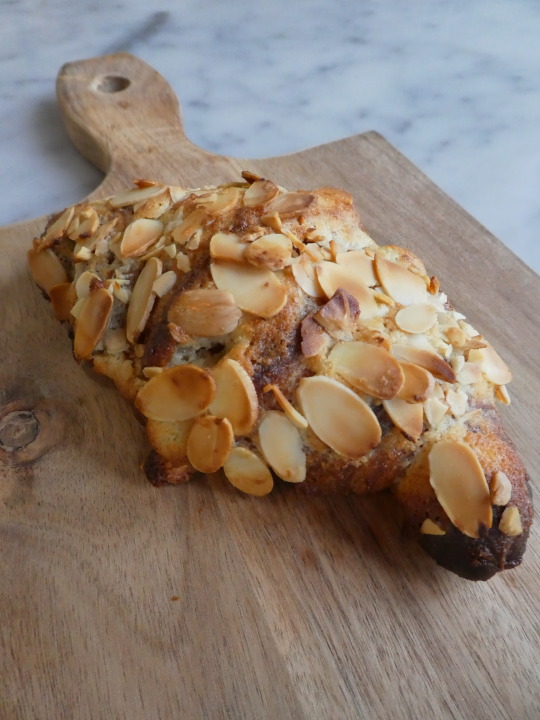
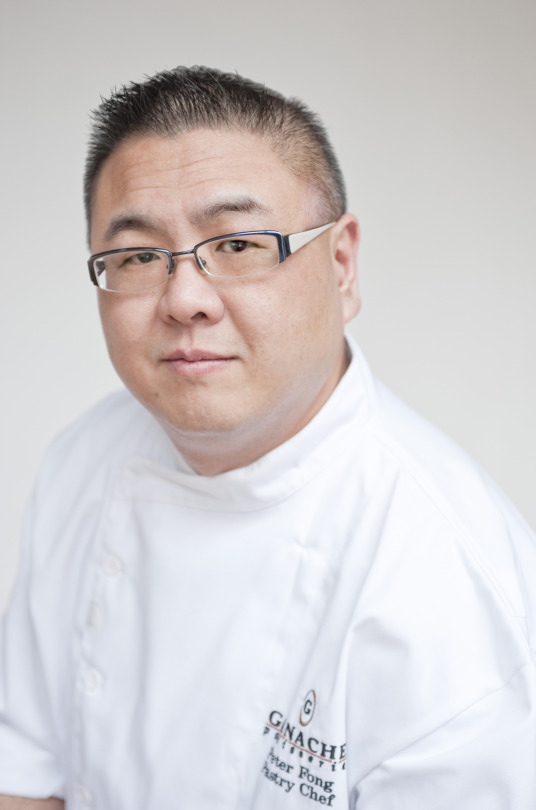

As part of the curriculum of PIDP 3100, this blog will chronicle my journey through the program as we explore andragogy and what it means to be an adult learner. On a more personal level, I will look at my experience in returning to academic studies, differentiating my time as a student at UBC over 30 years ago from my time at culinary school and then my career working as a pastry chef and business owner. And having recently been hired by the Vancouver School Board as a Baker supporting the instructors in secondary school culinary programs, I hope to gain more insight from the beginning of my new career in teaching and education.
2 notes
·
View notes
Text
The Science of Learning
Oh. I'm just wrapping up a digital media project on the Fluency Illusion, and I found this:
youtube
I would highly recommend it for anyone in a PIDP course. It talks about System 1 and System 2 learning, plus a lot of other valuable information.
0 notes
Text
Blog Post #3
After a quick call with my partner, Peter, a pastry chef and former bakery owner now working with the VSB, we explored the fascinating integration of online teaching in culinary education. Escoffier, Rouxbe, and Le Cordon Bleu exemplify platforms offering rich online culinary programs, adapting to modern student needs. Challenges arise, as noted by Chef Sahil Mehta in Peter’s blog post, in replicating taste and smell sensations online, emphasizing the enduring value of face-to-face instruction in high-energy kitchens. Despite these challenges, certain aspects, like cake decorating, thrive in online formats. This blend of tradition and innovation inspires a vision for a nuanced approach, leveraging online resources to enhance culinary education and engage students effectively. Simultaneously, the broader educational landscape embraces trends like AI, VR, and micro-credentialing, fostering adaptability for teachers and reshaping the future of education.
0 notes
Text
Trends in Adult Education.
Online learning is the most common trend I see in adult education. It is nothing new, but ever evolving and more frequently used, specially in our health care field of massage therapy in BC.
I found an especially relatable article in the Faculty Focus website that focuses on the link between the human connection and the online learner.
The article talks about various implications that online learning will have in the way that I instruct in the near future, such as relationships between the learner and instructor, the experiential learning experience, having the essential technology skills and components for change and success.
In massage therapy classes, online learning is already an important component. In my future as an instructor, I see myself making myself available to my students in person as well as via Zoom or other Video formats. I believe that scheduling regular individual check-ins can be beneficial in strengthening a trustworthy and positive learning experience for my students. The students need to know that there is a real person at the other side of the screen, along with assigned virtual group or partner meet-ups, thus enforcing the experiential learning experience.
I will need to keep up with the ever changing technology by taking the required courses, attending training sessions and/or seeking assistance from other experienced colleagues.
I will make sure to familiarise myself with course development and technical aspects of teaching while making sure that the basic internet and equipment requirements are met in my teaching environment.
Wish me luck!
#adult education#massage therapy#learning styles#minimal techno#technology#experiential learning#iamnotarobot#PIDP
0 notes
Text
VCC PIDP Blog
My Registered Massage Therapy career started in 2011 after graduating from WCCMT in New Westminster. I practiced full time at Electra Health Floor for almost 7 years and am currently at The Workshop Performance Clinic in Chinatown. I have enjoyed the manual aspect of being an RMT for all these years but have found that being a part time outreach instructor is very fulfilling and now my favourite days of the week.
I was offered the outreach instructor opportunity by one of my former instructors through Vancouver Career College back in 2015. I was nervous but excited to be working in a hospital setting at UBC hospital where the students massaged staff members. Unfortunately the staff were often too busy to find time for themselves so the program was terminated in 2017. Fortunately the school was able to acquire Emerge, a Drug & Alcohol Rehabilitation program where I have had the privilege of supervising for the last six years.
At the start of this year I was hired by VCMT as an Outreach instructor at Friends for Life Society, one of my favourite outreaches when I was a student. I have helped out at VCMT during final exams, at the student clinic and twice as a T.A. Being in front of a full classroom was nerve-wracking at first but I had a lot of fun and can see myself in this role in the near future.
A few months ago I was awarded a Scholarship for the PIDP course by the RMTBC association. I am very grateful for their support.
Being a full time instructor at an RMT school is part of my five year plan. Either here in Vancouver where there are lots of opportunities, or closer to my family in the Kootenays; either Vernon or Nelson.
Once this course is complete, I will decrease my days at the clinic to one or two and hopefully be able to be hired as a T.A. for a manual skills class where I know I would be a great fit.
I am hoping that this course will prepare me for my long-term goal of being the main instructor in the classroom and/or virtually.
1 note
·
View note
Text
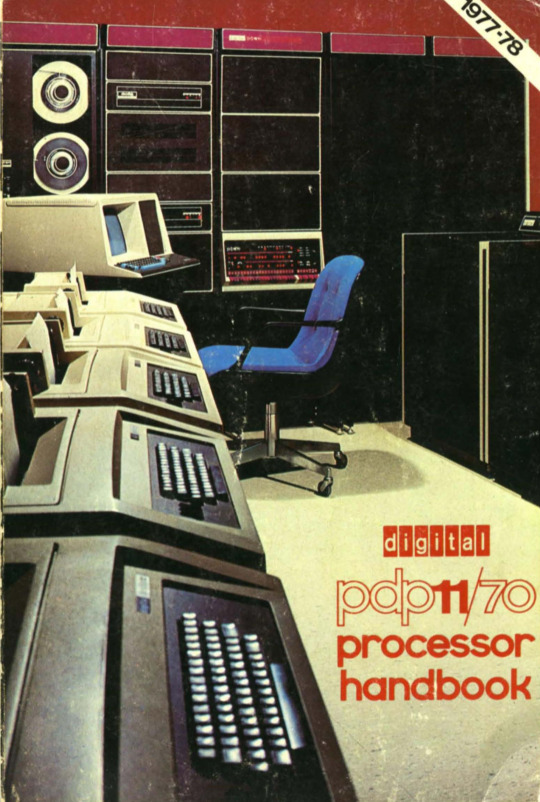
Ideal gaming rig
#computer stuff#digital equipment corporation#DECposting#old computers#god i want a PiDP and a VT100
145 notes
·
View notes
Text
Why would I want to teach?
I am a Red Seal Plumber and gas fitter. Unfortunately or perhaps fortunately a couple of strokes have caused me to step back and reflect on what is really important in my life.
Now I was a full-time single dad for 20 years. Very heavily involved with little league baseball as an executive member, coach and manager. I learned so much and enjoyed coaching. At work I was responsible for the mentoring and training of a team of professionals from 3-20 members depending on the project. I greatly enjoyed learning and teaching this group of professionals. Then the opportunity came my way last year to fill in and teach at UAPIC for 5 weeks a group of adults taking the plumbing foundations course. I can honestly say it was the most fulfilling 5 weeks of my professional career. I started to reflect on that.
In the back of my mind for as long as I could remember I knew at some point I'd want to teach. My grandfather and his brother were the original SHEETMETAL instructors at BCIT and some day I hoped to follow in his footsteps finishing my career as an instructor. I'd tell anyone who would listen and even some who didn't care that I was going to a plumbing instructor, but it was all talk and no action. Until my son and daughter teamed up on means pointed out that I have always pushed them to chase their dreamland take action. They asked the simple question. Why should they continue to drive to be be the best, most qualified and hardest worker in there individual circles if I didn't have to step outside my comfort zone and chase my dreams. Then my wife giving me one of my pump them up speeches she heard time and time again as I'd be trying to get just a little more from my players on the ball field and I was sold.
1 note
·
View note
Text
My Journey: From New Delhi to Vancouver, A Life in Media and Beyond
Deepa Bhatia
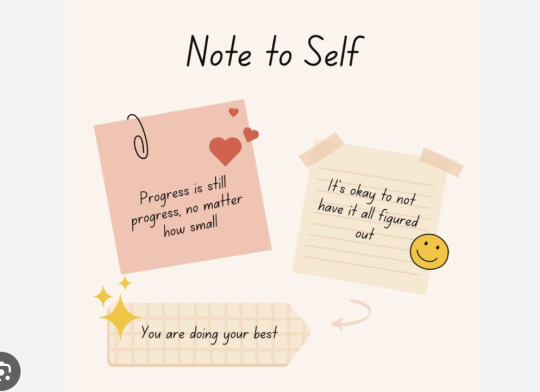
Born and raised in the vibrant chaos of New Delhi, India, I am a media and entertainment professional with a passion for building brands and embracing new challenges. Two years ago, I embarked on a bold new chapter in Vancouver, Canada, where I continue to evolve as a professional, learner, and individual.
Armed with a Master’s degree in History and a Post Graduate Diploma in Advertising and Public Relations, I dove into the dynamic world of media over three and a half decades ago. My career began at India’s largest media conglomerate, The Times of India Group, where I spent 15 years honing my craft as an advertising sales executive. My knack for understanding products, engaging in meaningful conversations, and driving sales with conviction propelled me up the corporate ladder to Chief Manager of Advertising Sales. The thrill of closing deals and the scent of success became my driving force.
Seeking new horizons, I transitioned into television, taking on leadership roles at TIMES NOW, India’s leading English news channel, as General Manager of Sales, and later as Head of Sales at 9X Media, a music channel network. At 9X, I embraced the challenge of delivering returns on investors’ capital, sharpening my strategic acumen. My four years with Walt Disney India added a global perspective, enriching my leadership skills and exposing me to world-class media practices.
Yet, a hunger for reinvention gnawed at me. Faced with the choice to stay on a familiar path or leap into the unknown, I chose the latter. I became a media-preneur, founding my own consultancy to guide media brands in crafting business strategies, launching assets, and building sustainable growth. My work now focuses on monetizing media ventures and empowering teams with effective leadership, a role that fuels my passion for problem-solving and innovation.
This journey has been anchored by the unwavering support of my husband, Ashwani, a seasoned advertising professional and digital marketer, and our son, Aaryan, a recent UBC Sauder graduate. Their encouragement has been my bedrock, especially during the daunting yet transformative move from India to Vancouver. This transition stirred a whirlwind of emotions, from navigating cultural shifts to embracing new perspectives. It has deepened my emotional intelligence, fostering resilience, self-awareness, and empathy—qualities that continue to shape my personal and professional growth.
Now, I stand at the threshold of another reinvention. Enrolling in the Provincial Instructor Diploma Program (PIDP) marks a return to my educational roots, 35 years after I last sat in a classroom. My goal is to become a skilled educator, teaching the art of effective sales while continuing to learn and solve problems. This pursuit is not just about career growth but about finding a larger purpose—one that keeps my curiosity alive and drives me to embrace steady progress.
From the bustling streets of New Delhi to the serene landscapes of Vancouver, my life has been a testament to curiosity and resilience. I am a lifelong learner, unafraid to start over, take one step at a time, and live boldly...
...for as Eleanor Roosevelt said, “Life must be lived, and curiosity kept alive.” :)
2 notes
·
View notes
Text
Phone Call with my awesome learning partner, Shaun.
Shaun and i had a great first conversation. We chatted on the phone for over an hour and told each other stories about our lives and work. we both ended up describing why we are enrolled in the 3100 PIDP course and what we will be using it for. For Shaun it was going to be work related around management and business related. I chatted a little bit about how I am going to be using the information in this course to teach in different ways in the classroom. Different ways in which we flip the classroom, working within a group and playing games with the information for the student to hopefully learning and retain the information. I wish Shaun the best of luck with his path way of PIDP.
Kurtis
0 notes
Text
PIDP 3100 Blog Post #1: The Evolving Landscape of Small Building Design in Canada
In the past, design and construction of simple buildings in Canada typically only required Architects (designers) and Carpenters (builders). This limited the requirements for professionals like structural, environmental, and geotechnical engineers. This kept the construction process more straight forward, predictable, and more importantly, cheaper. Using Part 9 of the building code allowed designers to specify the structural, architectural, and environmental separations for buildings under three-storeys in height and 600 square meters in area without the need for a professional engineer. This, by the way, covers most single-family homes and even many multi-family. In the most recent version of the National Building Code there have been a few changes that either now fully require an engineer or, have become so complicated, that it is passively pushing designers towards hiring an engineer by making the process too difficult. These two areas are: environmental separation and braced walls. Environmental separations must now be calculated by an Energy Advisor using proprietary software that is not available to the public, and the requirements for braced walls to resists wind and seismic have become so convoluted that most designers find it easier to hire an engineer, at the owners expense.
So what does this mean to me as an instructor? Well, I have to teach this stuff! As it stands now, carpenters in the Red Seal program are required to understand these parts of the code and how to interpret and design using the information provided therein. These subjects are not weighted very much in the over-all grade, yet require much more time to unpack with the students than they are necessarily "worth". When combined with the trend towards "just hire an engineer", this make the challenge even more daunting.
One of the ways I am trying to make Part 9 design more accessible is to develop calculators that use the convoluted and complicated formulas in the building code and breakdown the inputs into more straightforward definitions and dimensions that skilled carpenters and designers can use. On the teaching side, we can focus on how to get the information collected to use the calculator effectively, which is a more reasonable goal in the time allotted. And, on the industry side; contractors, designers, and homeowners can use the calculator to reduce engineering costs.
Here are some authoritative resources discussing the increasing professional requirements in small building (Part 9) construction in British Columbia:
This content is dedicated to the public domain under CC0 1.0 Universal (CC0 1.0) Public Domain Dedication.
0 notes
Text
Blog Post on Chapter Six – Experience and Learning
instagram
Chapter Six from our textbook deals with experiential learning theory and is something that I relate to from a training point of view as learning through practice and experience is how the culinary arts is traditionally taught. If we look through the lens of Kolb’s Experiential Learning Cycle, he states that,
“Learning…is the process of whereby knowledge is created through the transformation of experience [1984. p.38]” (Merriam & Bierema, 2014, p. 108).
And according to Kolb, to engage in meaningful learning, learners must engage in the four stages of his cycle: Concrete Experience, Reflective Observation, Abstract Conceptualization, and Active Experimentation.
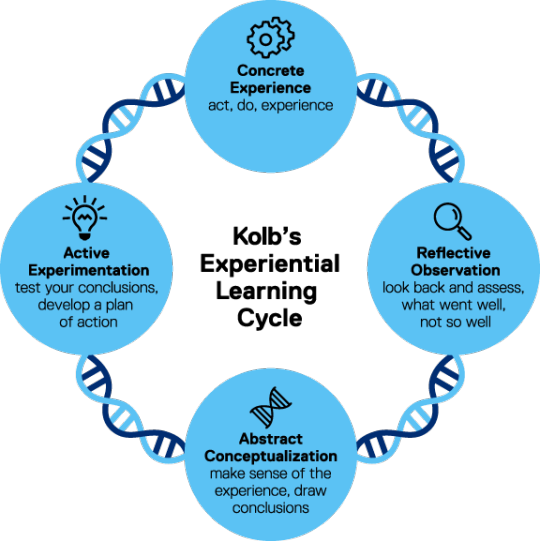
(Photo courtesy of https://www.torontomu.ca/experiential-learning/faculty-staff/kolbs-el-cycle/)
Using a culinary example, if I demonstrate a recipe to my class and then they replicate the recipe in the kitchen lab, they are engaged in a Concrete Experience. The next day, we think about how successful they were in reproducing the recipe and think about what they can do to improve their performances. This is the Reflective Observation stage. Through our class discussions, we decide that the students need to adjust their oven temperatures and baking times and this is Abstract Conceptualization or what they have learned. The following week, when we revisit this recipe in the kitchen lab, the students make the required adjustments and see better looking products, which is Active Experimentation or learning from their experiences.
And in my opinion, the notion of reflective practice is the most important part of the experiential learning theory; when we critically reflect on our experiences, that is when learning with deep meaning occurs.

(Photo courtesy of https://www.bakersjournal.com/a-bakers-path-4739/)
Later in Chapter Six, another section that really resonates with me is the discussion about cognitive apprenticeship. From our textbook,
“Like traditional apprenticeships in which the apprentice learns a trade such as…culinary arts by working under a master teacher, cognitive apprenticeships allow the master to model behaviors and the thinking that accompanies the task” (p. 119).
In support of this theory, I found an interesting article by Tsui, P.L. & Chen, Y.C. (2020) where they study the satisfaction of hotel workers in their F&B service training under a situated cognition apprenticeship model versus a traditional lecture-only model. They conclude that,
“The current study has experimented with cognitive apprenticeship teaching and has determined that learning satisfaction is enhanced when the master assists during the learning process. Furthermore, the study has also found that cognitive apprenticeship teaching is superior to conventional teaching, which may be because F&B service demands the acquisition of more knowledge and skills in a situated learning environment, wherein the master and apprentice interact and solve problems together. Meanwhile, the learner also acquires F&B skills by following the master’s lead. These factors work together to achieve a higher level of learning satisfaction.” (p.13)
Therefore, this study supports the validity of teaching the culinary arts within a situated cognition apprenticeship model as it creates a more positive learning environment for the students where student and teacher work together to learn from their experiences in a meaningful way. In my evolution as a pastry instructor, I hope that I can utilize this model in my future classrooms and teach my students to become reflective and self-directed, lifelong learners.

(Photo courtesy of https://www.vcc.ca/programscourses/baking-and-culinary/)
0 notes
Text
Hello everyone! Below is an introduction submission I did for the PIDP 3320 course, Online Learning Fundamentals. We were asked to provide a brief introduction and explain why we are interested in online learning. The PIDP program is my first experience as a student in a fully online environment. Although I'm mostly used to in person instruction, I'm really looking forward to online learning! Not just as a student myself, but as a future teacher learning and developing new skills that I can bring into the classroom.
0 notes
Text
Creating a growth mindset
We have a problem. I teach both entry level and post graduate cooking at the college level.
Because our curriculum is set by SkilledTradesBC (Formally the ITA), we are bound as instructors to teach the material given to us, and then to assess with the exams and rubrics provided.
I fully understand the importance of this system. The goal of the federal government in Canada is to harmonize the skilled trades so that a graduate of a trades program in one province has the same level of education as a graduate in another region.
I experienced the need for this when I graduated from cooking school in Quebec in 1995. I moved soon after to Banff, where my apprenticeship hours were not recognized by the province of Alberta. As a result I was not able to complete my Red Seal examination.
We’re in a new found phase of Canadian unity, and I do really hope that greater harmonization can be achieved, so that trades curriculums taught in one province will match those of another.
That said, as a professional and an instructor, I want to foster a growth mindset in my students that goes above and beyond the simple contents of the curriculum.
I know it, and you know it. As instructors, we have students attending our classes just to pass. Our class that they are attending may just be a stepping stone onto something else. How do we change that? How do we develop curiosity, choice, ownership, and give our students a voice? How do we lead them down a path of a learner’s mindset?
Not yet
This is one of best things that I have taken from this current PIDP class. It’s the idea that learning is a path. Assessments are snapshots of progress along that path. Although a student may do poorly in an assessment along the way, it seems so important to me now to say “You will learn this skill, but you’re just not there yet.” I also mix in encouragement when working with students by saying “This is hard. It took me a long time to learn this skill, and it will take you some time also. But you will get there.”
Failure as a tool
This is so important to me. We really don’t learn something if we get it right every time. Failure to me is just as important as the successes, and I will often mix that into my lesson plans. I will have most of the students prepare dishes the correct way, and then have a few students intentionally prepare things incorrectly so that we can compare. It works very well in the kitchen, and it emphasizes to the students why we do things the way we do.
Turn your trade into a creative art.
So this is an easy one, since I teach cooking. But I really feel that we can apply it to many trades. When we take a trade and treat it as a creative art, we push our students to develop a curiosity beyond the base curriculum. It gives them a personal voice. I will develop this idea further in my next presentation.
Be authentic and have fun
More than anything, it’s important to me to have fun in the classroom and in the kitchen. I think that we can take the material too seriously and get bogged down in what has to be learned. I remember this well from my university days when instructors would run on auto pilot, simply delivering the information. Be yourself, keep it light, and have fun.
0 notes
Text
Unmonitored radiation hazard at the Darlington Waste Facility
Dr. F. R. Greening, Hamilton, ON. 23 Apr 25 On March 26, 2025, CNSC staff made a presentation at Commission Hearing CMD 25-H2.A in which it discussed OPG’s Public Information and Disclosure Program, (PIDP), with regard to the performance of Darlington NGS and its licence renewal application. The CNSC concluded that Darlington was in compliance with the requirements of CNSC REGDOC-3.2.1. by…
0 notes
Text
PIDP 3100 Assignment 4 – Roles and Trends
Introduction
Portfolio Assessment
In academics and professional development, portfolio assessment stands out for its holistic approach that links theory with practice.
Definition
Portfolio assessment is a method of assessment often used in academic and professional fields, where an individual’s ability, progress, and achievement are evaluated through review of a pre-selected collection of work known as a portfolio. Materials such as projects, reports, examinations, observations, or other forms of evidence that reflect a person’s competency or growth over time are used as portfolio.
Benefits of Portfolio assessment
it provides a cumulative and comprehensive view of an individual’s achievements.
It supports interdisciplinary learning and promotes self-directed learning opportunities, helping individuals become independent, self-reflective learners.
4 key principles in portfolio assessment:
The collection of evidence from various sources and across different periods, demonstrating the breadth and depth of an individual’s ability or progress.
The organization and presentation of the collected works in a manner that enables easy and meaningful review.
Evaluating the portfolio, usually by multiple reviewers, to ensure fairness and objectivity. Reviews may be based on established criteria or rubrics, or sometimes on relative progress and development.
Reflection, which is facilitated through the portfolio’s structure, encouraging the individual to reflect on their learning progress and areas of improvement.
Portfolio Assessment in Education
In an educational setting, portfolio assessment is often applied to demonstrate students’ learning and growth over the course of a school term or academic year.
Portfolio Assessment in Professional Development
In the field of professional development, portfolio assessments are used to evaluate and determine an individual’s professional competence and growth.
Conclusion
Portfolio assessment serves as an all-encompassing approach to scrutinize individual development and learning. It champions a reflective, autonomous, and perpetual learning style.
0 notes
Text
So it Begins
Greetings and welcome to my blog for my PIDP journey! My name is Ben and I’ve spent my last 5 working years in health insurance, rising from a humble clerk to an efficient administrator. I've moved into a training job for the company I work at and I am looking to gain the skills needed to be an effective teacher and communicator.
In my spare time I enjoy gathering with friends to play board games and keeping up with a myriad of shows. My goals in the near future, aside from complete this course, are to pick back up swimming and reading (although not at the same time!)
1 note
·
View note